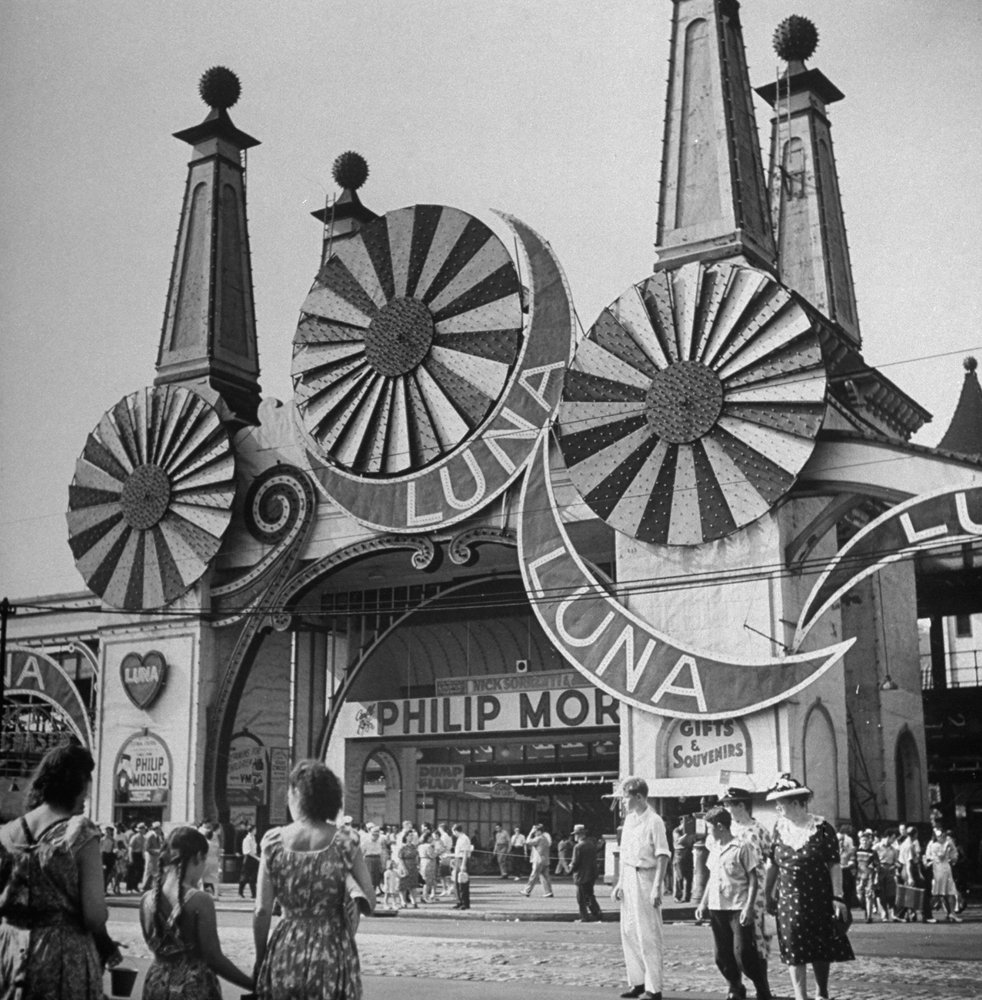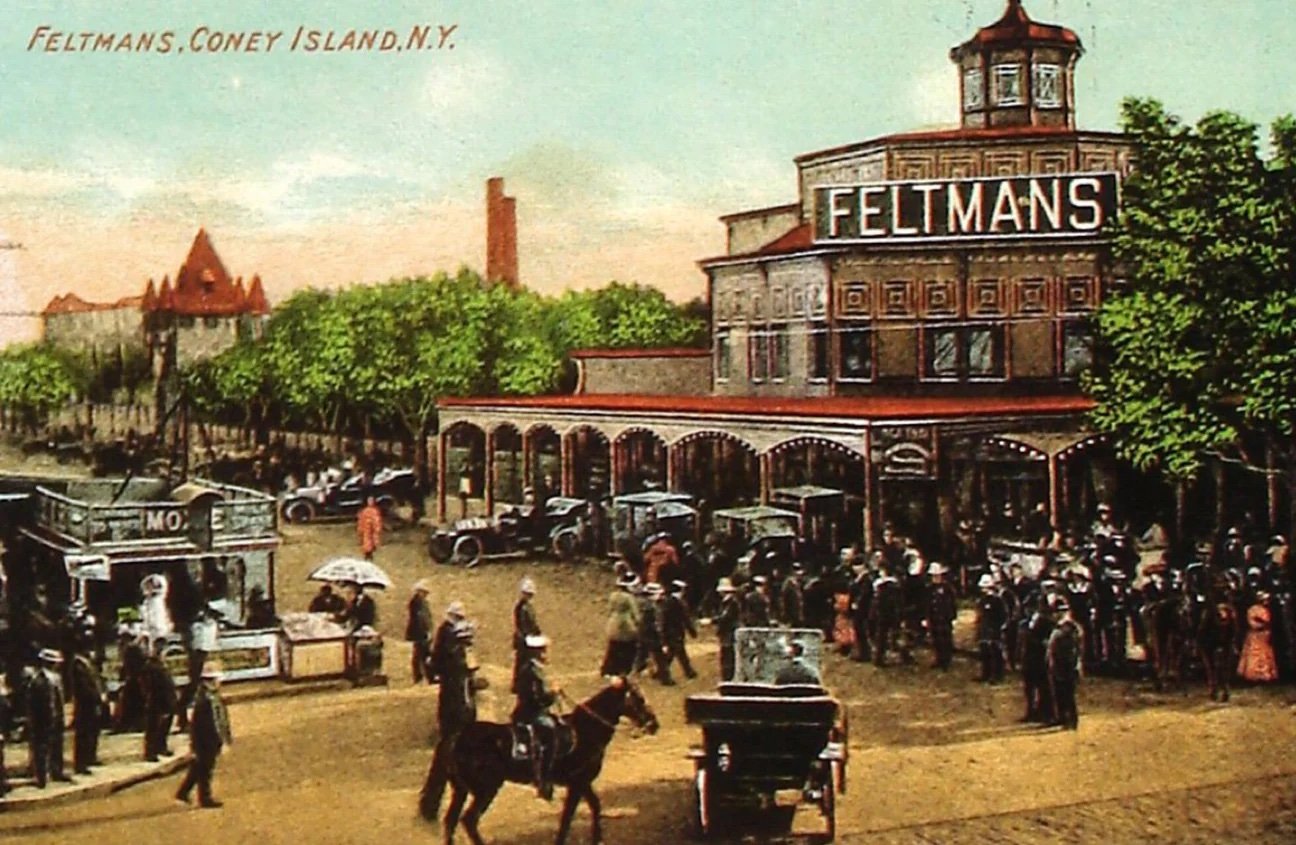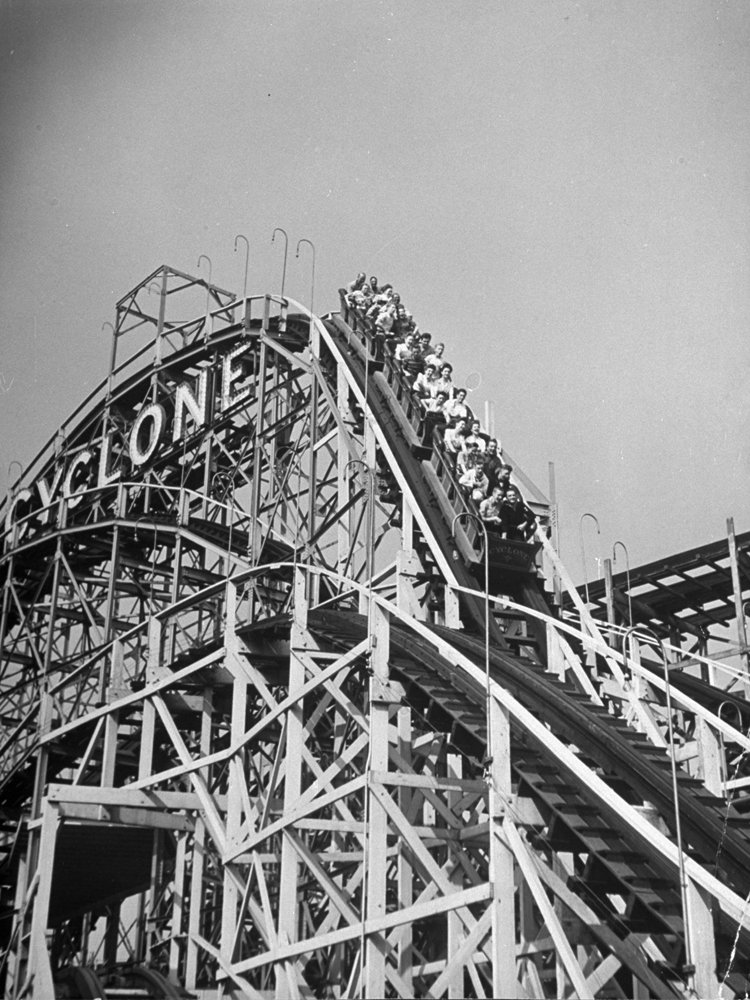Coney Island
Coney Island was in fact an island at one point… but if you think about it, for the last 100 years it’s been connected to Brooklyn.
Early map of Coney Island - Photo: Library of Congress
In 1624 around the time the Dutch settled Manhattan, Coney Island was inhabited. The name of the island is believed to have originated from the Dutch word "konijn," which means rabbit, because of the significant population of rabbits that inhabited the island.Over the next 100 years or so residents of Gravesend Brooklyn used Coney Island and its neighboring islands to house cattle in the winter months.
It wasn’t until 1824 that the Gravesend and Coney Island Road and Bridge Company built the first bridge over Coney Island Creek connecting it to the mainland. Thanks to new infrastructure Coney Island attracted wealthy vacationers from Manhattan starting in the 1830s.
Elephant Colossus Hotel - Photo: Library of Congress
In 1884, Coney Island opened its inaugural roller coaster, known as the Switchback Railway which was entirely gravity-driven. Nearby the coaster was a super odd 31 room hotel called the Elephantine Colossus. Standing seven stories tall, this building was shaped like an elephant and until its demolition in 1896 it was the first sight to greet immigrants arriving in New York before they saw the Statue of Liberty.
From the 1880s up to World War II Coney was the largest amusement park area in the United States. At its height there were three rival parks, Luna Park, Steeplechase Park, and Dreamland.
Steeplechase Park 1940 - Photo: Public Domain
Steeplechase Park was operational from 1897 ro 1964! (It even survived a few fires.) Its creator, George Tilyou, was known for being innovative. For example, when he saw the Parachute Jump at the 1939 World’s Fair he purchased it and installed it in his park. It’s now arguably the most iconic piece of Coney Island’s skyline.
Luna Park - Photo: LIFE Magazine
Luna Park opened in 1903 and ran until 1944. Its creators, Frederic Thompson and Elmer Dundy created a wildly successful ride called ‘Trip to the Moon’ at the 1901 Pan-American Exposition in Buffalo, NY. They were prompted by Tilyou to bring the ride to Coney Island. Unlike Steeplechase, Luna Park was very imaginative and the architecture had no consistency creating a kind of surreal fantasy land.
Dreamland 1905 - Photo: Shorpys
Dreamland was only in operation from 1904 to 1911. It burned down after a fire started in 1911 and its owners, not wanting to compete with the more successful Steeplechase Park and Luna Park, decided not to rebuild.
Reigelmann Boardwalk - Photo: NYPL Digital Archives
In the 1920s, as the amusement park's popularity started to fade, the Reigelmann Boardwalk was built, allowing guests of all classes to walk along an unobstructed path with a view of the beach. Today, this seems trivial but at the time it was revolutionary!
Feltman's - Photo: Public Domain
We can’t talk about Coney Island without mentioning hot dogs. Most people aren’t aware but Charles Feltman is said to have invented the hot dog on Coney Island in 1867. He had a very successful shop for many years and in 1915 a guy named Nathan Handwerker started working for him. It wasn’t long before Nathan opened his own shop right across the street! I’ve had both (many times) and I prefer Feltman’s.
The Thunderbolt 1985 - Photo: Wikicommons
The Thunderbolt roller coaster was opened in 1925 and soon after in 1927 the Cyclone. Unfortunately the original Thunderbolt only made it to 1982 before being demolished in 2000. The Cyclone, however, was refurbished in 1975 and today sits on the National Register of Historic Places. I never go to Coney Island without riding it at least once!
The Cyclone - Photo: LIFE Magazine
In 1964 the last of the parks closed and Coney Island went into a dark period of decline. It wasn’t until the 1990’s with the creation of the minor league team The Brooklyn Cyclones and opening of their ballpark on the site of Steeplechase Park that Coney Island started to bounce back.
Maimonides Park - Photo: WikiCommons
Photo: WikiCommons
Today, Coney Island has so many vibrant attractions and is still centered around amusement parks. Go visit, and if you do, no trip is complete without a ride on The Cyclone and a Nathan's Hot Dog.











